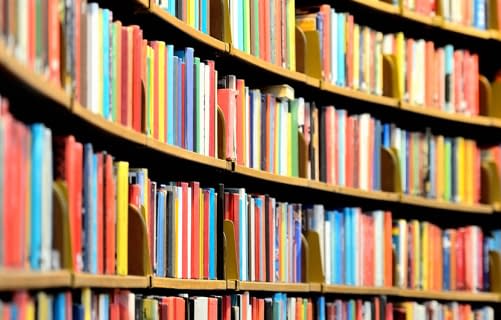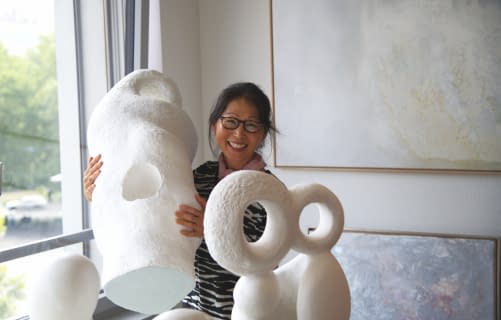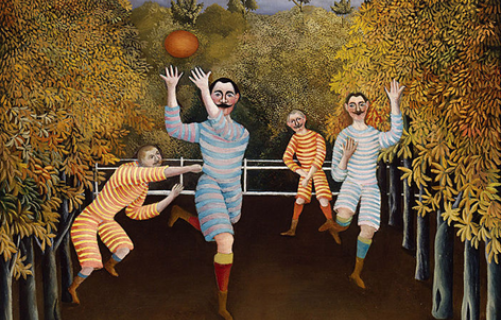Short Summary
He is a trained architect, worked for decades as a production designer in the film industry, and has always been a visual artist. In this interview with art24, German Pizzinini talks about the interplay between his professional paths and his painting, the thematic focus of his works, and how social developments influence his artistic concepts.
You have taken on many different roles in your life. Particularly noteworthy is your work as a stage builder in the film industry before fully dedicating yourself to visual art. To what extent do your experiences from the film world and the visual impressions from set design still influence your painting?
First, I’d like to clarify something: I didn’t build the sets – I designed them, planned them, and oversaw their execution. I wasn’t a stage builder, but a scenographer (or “Set Designer”). Scenography is part of the visual arts. For each production, I set up my own studio where I continued to paint. The message or metaphor of a scene – for which I was responsible for the visual framework – was always a challenge I wanted to approach artistically.
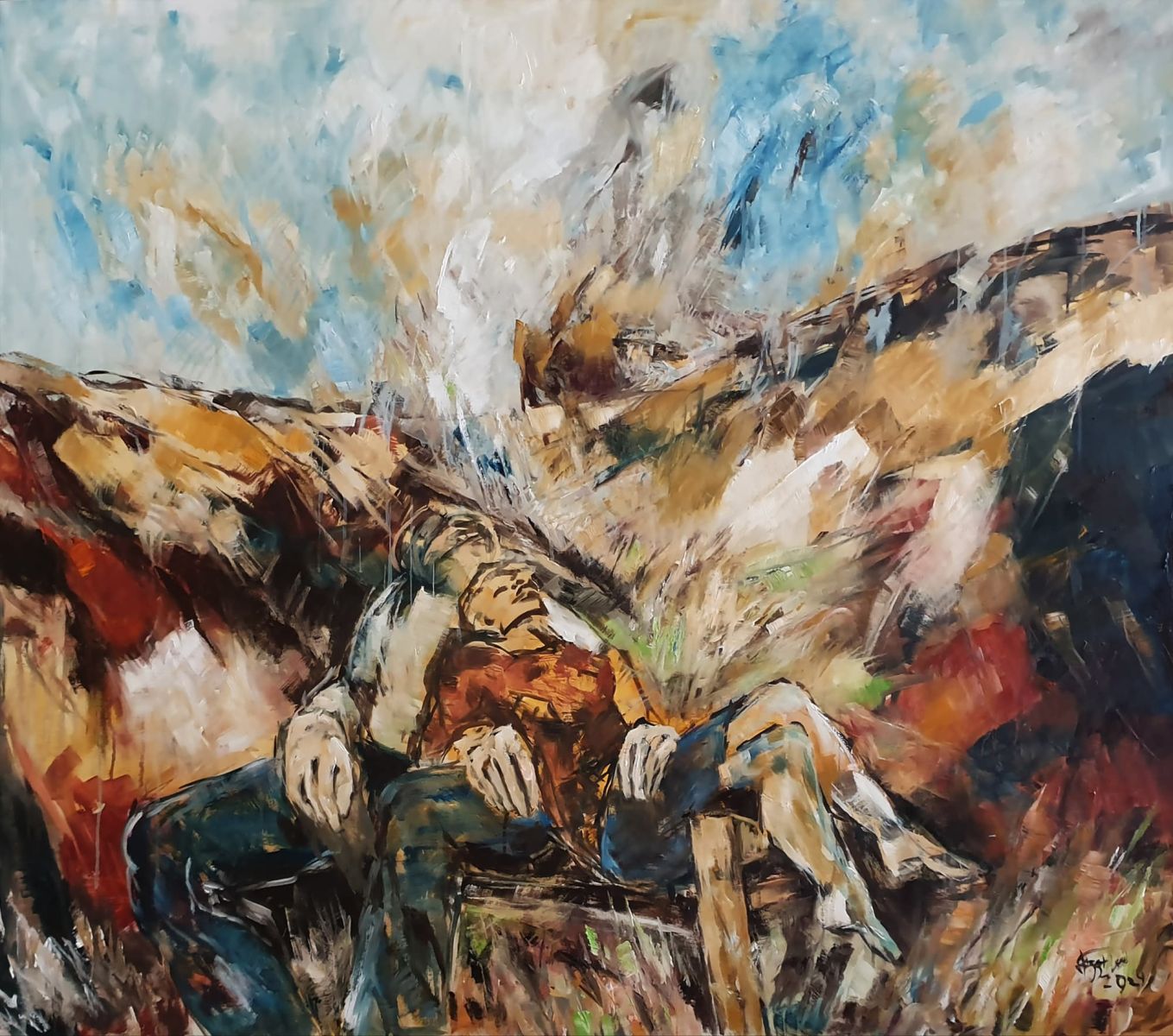
You also worked as an architect. Have the drawing elements of architecture left traces in your painting?
In architecture, the real, spatial, and three-dimensional engagement plays a major role – especially perspective. This experience was extremely helpful in translating space and color into my paintings.
Why did you ultimately choose a career as a visual artist? What appealed to you more than film sets and architecture?
As I mentioned, I’ve always been a visual artist – only the focus shifted over time. During my architectural work, I primarily explored graphic forms of expression. When I began working in film set design 45 years ago, color became a key element – and inevitably, I turned back to painting more intensively.
You mention that you want to tell stories through art. Why is storytelling important to you? And why is painting the right medium for this purpose?
For me personally, non-figurative painting serves more as a means to study color compositions, spatial effect, and emotional depth. As an independent artwork – which I fully respect – I often find it merely decorative. I, on the other hand, want to communicate something to the viewer, provide food for thought – whether it’s something personal, current, or simply a feeling – using realistic elements, metaphors, or symbolism. Painting is the best means of expression for me.
From your biography, I learned that in 1976, you co-founded an artist group called the “Critical Naturalists.” The movement aimed to oppose the trend of abstract art. Was abstraction a topic that triggered fear at the time? What do you see as the particular strength of figurative art?
In the 1970s, visual art – especially in Vienna – was heavily influenced by politics. Realism, in any form, was considered left-wing and sometimes even labeled communist. The artists were usually socially minded but distanced themselves from political organizations – with a few exceptions. Abstract art, on the other hand, was seen as right-wing conservative. Not for nothing was its most prominent representative a monsignor.
Abstract art – especially informal abstraction – doesn’t pose a direct thematic challenge. It doesn’t evoke fear, at most confusion, indifference, or rejection. One must engage deeply with it to gain access. Figurative painting, even in alienated representations, offers far more possibilities to trigger a response in the viewer.
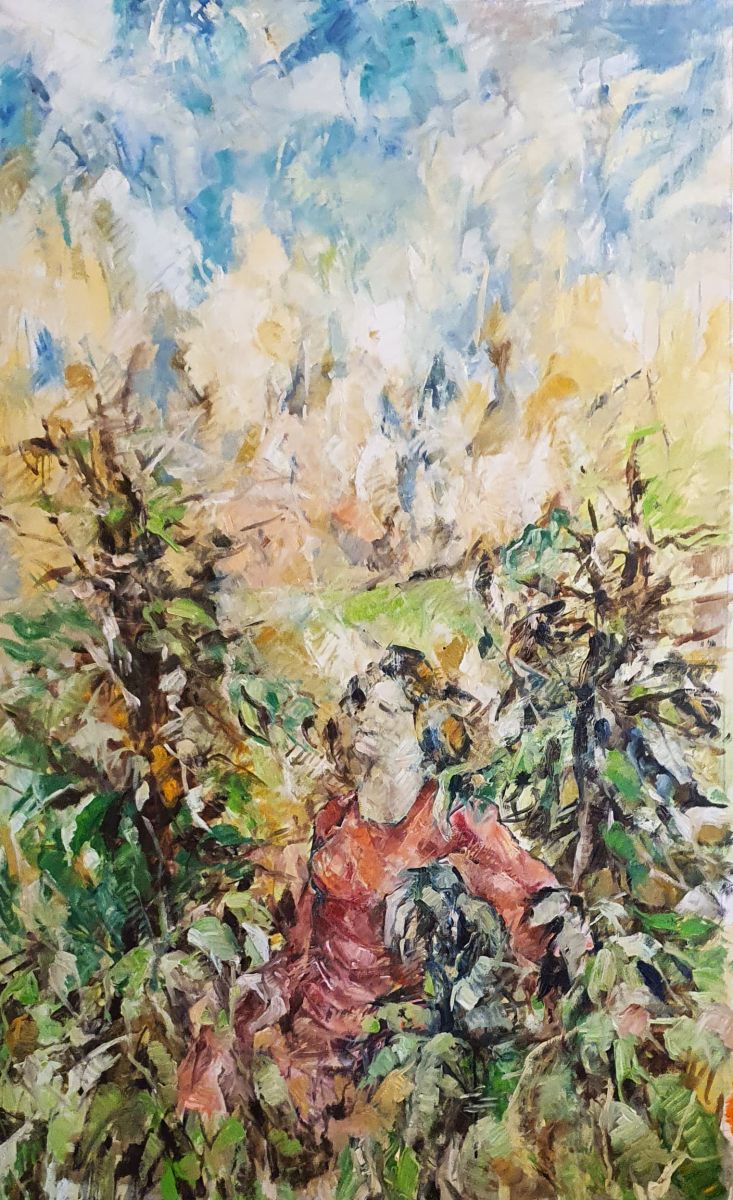
What is your view on abstract art today?
Serious abstract art can certainly be a challenge for me, and I respect it. However, there is also speculative art that, to me, holds no meaning.
Looking back, would you join such a movement again today? How did this phase shape your artistic identity?
Apart from the fact that I no longer have any ambition to be part of a group, I probably wouldn’t join again. The initial enthusiasm and dynamics of a group fade quickly – what remains is a social gathering. That wasn’t enough for me.
After the group dissolved in 1983, you continued to develop your style on your own. What changes have become visible in your art since then? What has changed in your approach and expression?
I actually left the group in 1979. After that, I was more influenced by my new professional environment and the opportunity to visit museums throughout Europe. That gave me a much deeper access to symbolism, metaphor, and also abstraction.
You describe your current style as “baroque expressionism.” What exactly does that term mean to you, and do you see a connection between the baroque and expressionist periods?
The term “baroque expressionism” was coined by my wife. It describes the opulence of the Baroque combined with the color palette of the Expressionists – bright, luminous colors, processed dynamically and with momentum.
The series “Zeit der Angst” (EN Time of Fear) is a central work of yours, created in the context of the 2015/2016 refugee crisis. Around two million people fled to the European Union at that time. What stories and emotions do you explore in this work? And to what extent is the series still relevant today?
The issue persists in Europe to this day. In Austria alone, there are about 26,000 asylum applications each year – not including the approximately 90,000 Ukrainian nationals. The catalyst for the series was a documentary on the refugee situation in international camps and in Austria’s largest reception center, Traiskirchen.
The series consists of six thematically structured paintings: the perpetrators of fear, the people living in fear, and the guardians of fear. Racism and xenophobia are far more widespread in Austria than officially acknowledged. With the exhibition, I wanted to make this issue visible. “Migration and flight have always accompanied human history – due to climate changes, armed conflicts, or natural disasters. What would be new is a concept of mutual integration.”
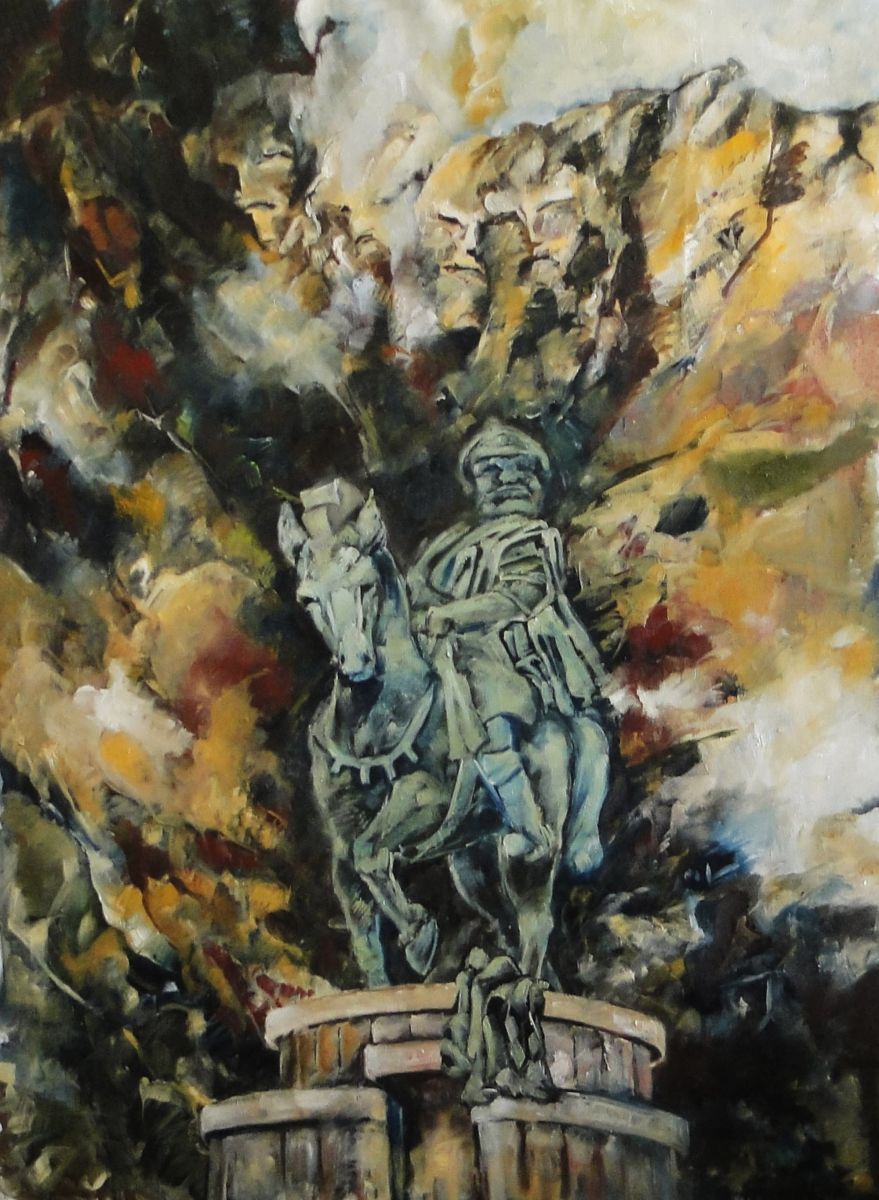
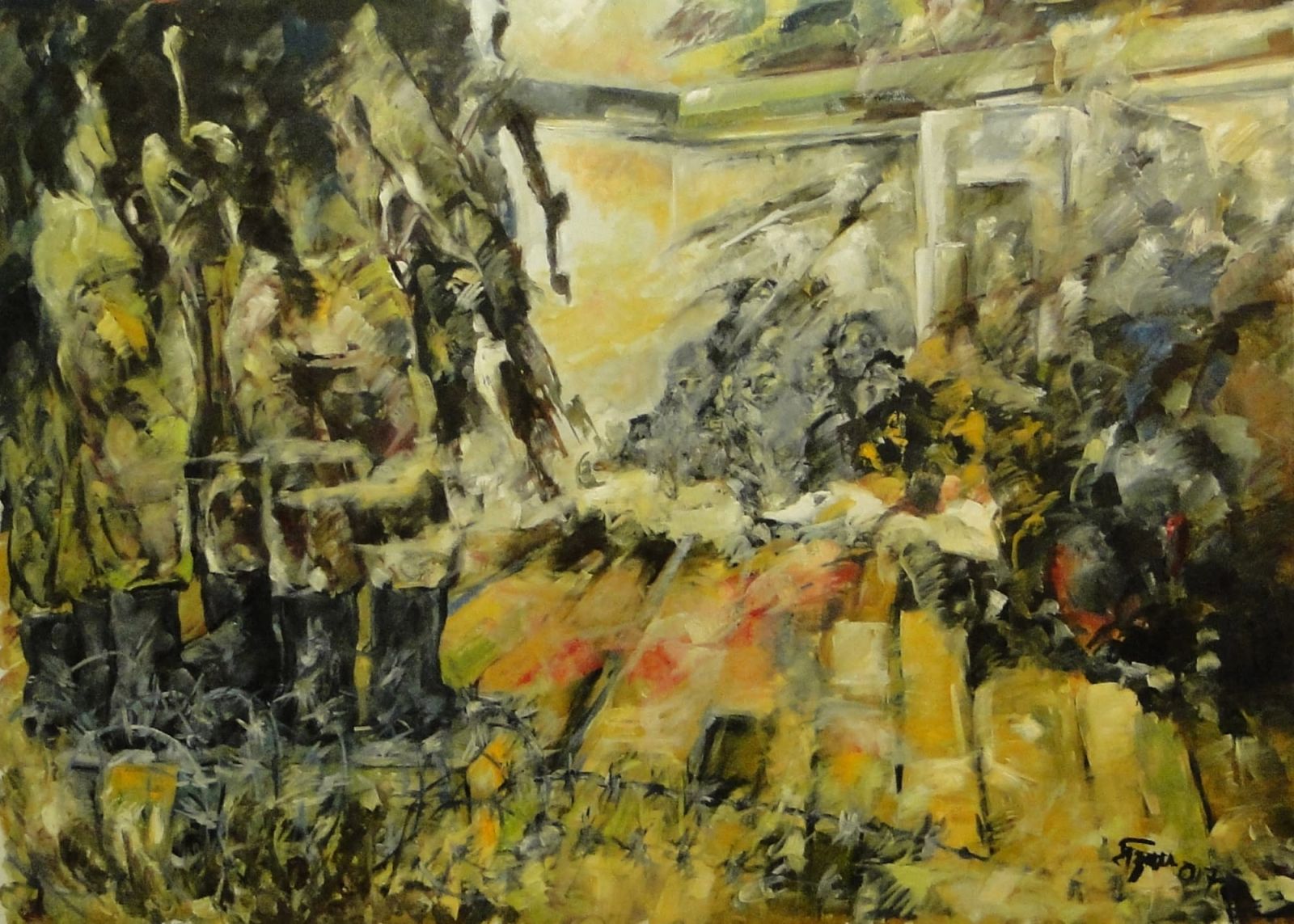
In your work “Kaffeehaus” (EN coffeehouse), you address social changes brought about by new technologies and media. Would you consider painting in this context as a form of counter-movement? If so, why?
No – I don’t see painting as a counter-movement. Today, it positions itself in the field of tension between traditional art and new technologies. In contrast to the fleeting flood of images on social media, painting offers space for reflection, focus, and craftsmanship. It’s not geared toward efficiency, but toward engagement. In that sense, painting is not outdated – but more relevant than ever.
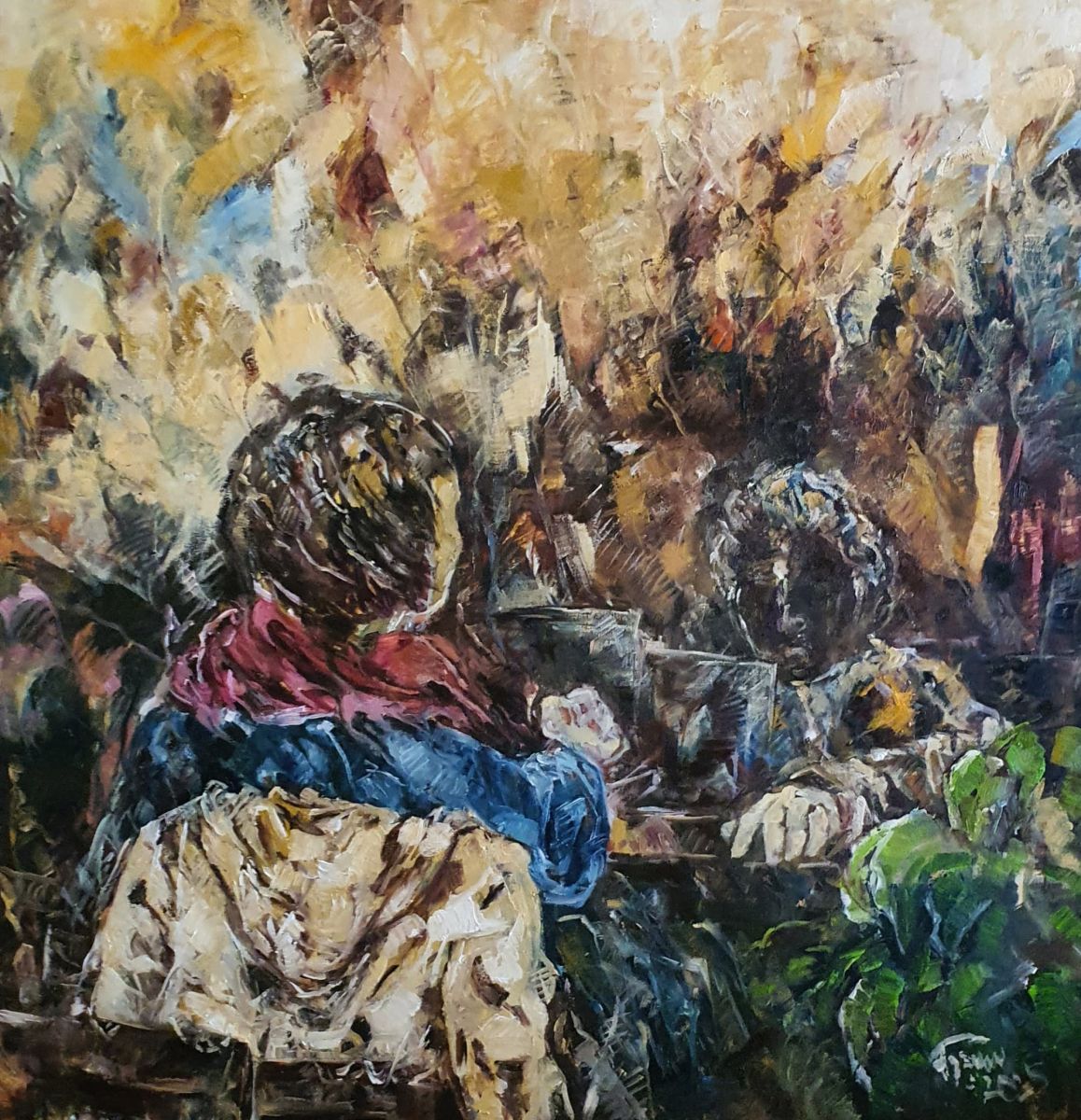
In many of your works, you pose moral and ethical questions and reflect on human coexistence. Do you use art as a tool to draw attention to social injustices or global issues? Is your art always situated within a broader context of world affairs?
Yes, I do. Painting is the form of expression I master best to communicate socially relevant topics to a broader public.
Art has the power to make people think. Do you believe art has a responsibility to address societal issues, or should it also be understood purely as an aesthetic pleasure?
Regardless of how art is used – it always has a social impact. From that follows a responsibility.
Are there other themes or motifs that are still “dormant” within you and that you definitely want to pursue in the future? Would you be willing to share them with us?
There are many themes and motifs, but I don’t plan ahead. My topics usually emerge spontaneously – from experiences, random situations, or social events.
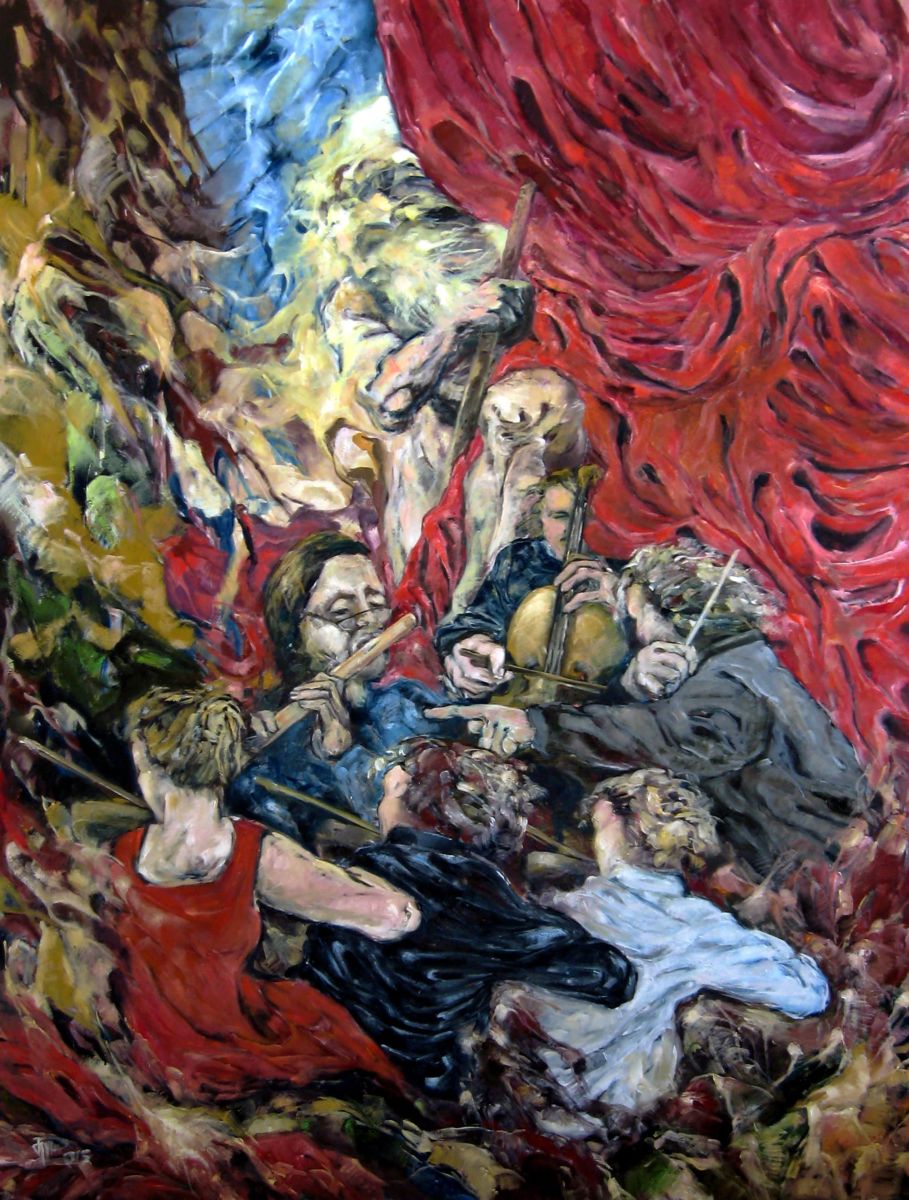
Could you imagine experimenting with techniques beyond painting? If so, which ones might appeal to you?
If a theme calls for it, I can imagine using any type of material. In 1986, together with VALIE EXPORT, I created an installation made of copper, felt, plastic, and oil for the exhibition In Honor of Beuys at the Lenbachhaus in Munich. At the same time, I also created a few sculptures made of stone and metal.
When the Canvas Becomes a Voice
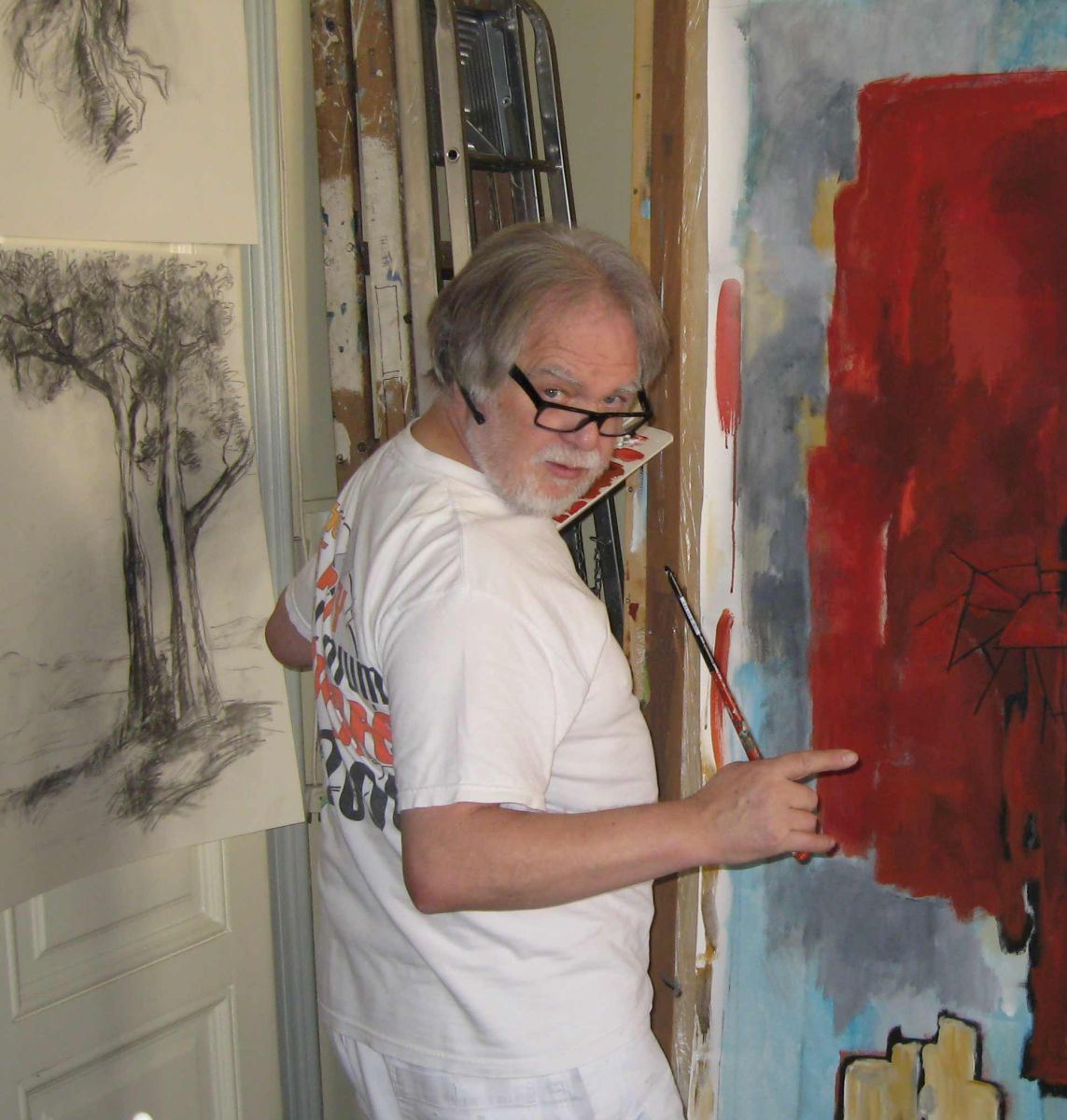
German Pizzinini’s oeuvre reflects a consistent artistic path – always driven by a desire to show more than just beautiful images: he wants to tell stories, question, and provoke thought. His realistic depictions, enriched with symbolism and metaphor, serve as tools for reflecting on societal developments, personal impressions, and collective experiences. As such, his painting is deeply rooted in the present. And this is precisely where the relevance of German Pizzinini lies. He shows that art may touch, disturb, and challenge – especially in a time when so much remains on the surface.
Discover more works by German Pizzinini on his profile at art24 – and be inspired by images that tell stories.
The interview was done by: Yvonne Roos
Author: German Pizzinini

